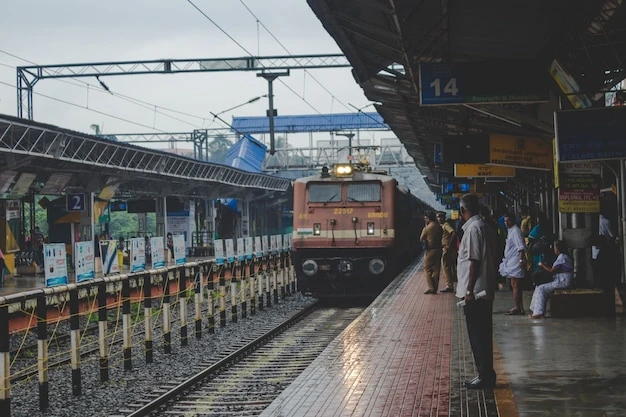The Indian Railways, one of the largest rail networks in the world, relies heavily on sophisticated signalling systems to ensure the safety, efficiency, and reliability of train operations. These systems are essential for controlling train movements, preventing collisions, and optimizing traffic flow on the vast railway network. This blog delves into the critical aspects of Indian Railway Signalling systems , focusing on SAT (Site Acceptance Testing) Testing, Commission and Control Systems, Railway Automation Companies, and leading Indian Railway Signalling Companies, with a spotlight on Sensedge.

Indian Railway Signalling systems
Understanding Indian Railway Signalling Systems
Signalling systems in railways serve as the backbone of train operations, providing the necessary communication and control mechanisms to manage train movements safely and efficiently. In India, the signalling system has evolved significantly, incorporating advanced technologies such as electronic interlocking, automatic signalling, and centralized traffic control.
Electronic Interlocking Systems
Electronic interlocking systems are pivotal in modern railway signalling. They ensure that train routes are set correctly and safely, preventing conflicting movements. These systems use electronic circuits and software to control signals and points, replacing the traditional relay-based interlocking systems. Sensedge, a leader in railway signalling technology, has been at the forefront of developing and implementing advanced electronic interlocking systems in India, enhancing the safety and efficiency of train operations.
Automatic Signalling
Automatic signalling systems are designed to manage train movements without direct human intervention. These systems use track circuits, axle counters, and other detection mechanisms to monitor train locations and control signals accordingly. The integration of automation in signalling not only improves safety but also increases the capacity of the railway network by reducing headways between trains.
Centralized Traffic Control
Centralized Traffic Control (CTC) systems consolidate the control of multiple railway sections into a single control center. This centralization allows for better coordination, real-time monitoring, and quicker response to any operational issues. CTC systems are crucial for managing busy railway corridors and ensuring smooth train operations.
SAT Testing in Railway Signalling
Site Acceptance Testing (SAT) is a critical phase in the implementation of railway signalling systems. SAT Testing Commission and Control System involves rigorous testing of signalling equipment and systems at the installation site to ensure they meet the required specifications and function correctly in the operational environment. The process includes:
- Functional Testing: Verifying that all signalling components, such as signals, points, and track circuits, operate as intended.
- Integration Testing: Ensuring that the signalling system integrates seamlessly with other railway systems, including train control and communication systems.
- Performance Testing: Assessing the performance of the signalling system under various operational scenarios to ensure reliability and safety.
Sensedge plays a crucial role in SAT testing by providing advanced testing tools and methodologies. Their expertise ensures that signalling systems are thoroughly tested and validated before being commissioned for operational use.
Commissioning and control systems are integral to the successful deployment and operation of railway signalling systems. The commissioning process involves several key steps:
- Design Review: Thorough examination of the signalling system design to ensure compliance with safety and operational requirements.
- Installation and Integration: Physical installation of signalling equipment and integration with existing infrastructure.
- Testing and Validation: Conducting comprehensive tests, including SAT, to validate the functionality and performance of the system.
- Training and Handover: Training railway personnel on the operation and maintenance of the new signalling system and officially handing over the system for operational use.
Control systems, such as CTC, play a vital role in managing train operations. These systems provide real-time data on train movements, enabling efficient traffic management and quick response to any operational issues. Sensedge\'s advanced control systems are designed to enhance the operational efficiency of Indian Railways, ensuring smooth and safe train operations.
Railway Automation Companies in India
The Indian railway signalling sector has seen significant contributions from various automation companies that specialize in developing and implementing cutting-edge signalling technologies. These companies play a pivotal role in modernizing the railway infrastructure and improving safety and efficiency.
Sensedge
Sensedge is a prominent player in the Railway Automation Companies , known for its innovative solutions and advanced technologies. The company offers a comprehensive range of products and services, including electronic interlocking systems, automatic signalling solutions, and centralized traffic control systems. Sensedge\'s commitment to quality and innovation has made it a trusted partner for Indian Railways in enhancing the safety and efficiency of train operations.
Leading Indian Railway Signalling Companies
Several Indian companies have made significant strides in the field of railway signalling, contributing to the modernization and safety of the railway network. Among these, Sensedge stands out as a key player in the Indian railway signalling sector, known for its advanced technologies and comprehensive solutions.
Sensedge has made a name for itself in the Indian Railway Signalling Companies through its relentless pursuit of innovation and excellence. The company\'s product portfolio includes state-of-the-art electronic interlocking systems, automatic signalling solutions, and advanced centralized traffic control systems. Sensedge\'s solutions are designed to meet the unique challenges of the Indian railway network, ensuring safety, reliability, and efficiency.
Contributions to Indian Railways
Sensedge\'s contributions to Indian Railways are significant. The company\'s advanced signalling systems have been deployed across various railway sections, enhancing the safety and efficiency of train operations. By providing cutting-edge solutions and comprehensive support, Sensedge has played a crucial role in modernizing the Indian railway signalling infrastructure.
Conclusion
The Indian Railway signalling system is a critical component of the nation\'s railway infrastructure, ensuring the safe and efficient movement of trains across the vast network. With the advent of advanced technologies and the contributions of leading companies like Sensedge, the signalling systems have undergone significant modernization, enhancing safety and operational efficiency. The rigorous processes of SAT testing, commissioning, and control systems play a vital role in the successful implementation of these advanced signalling solutions, paving the way for a safer and more efficient Indian Railways.

